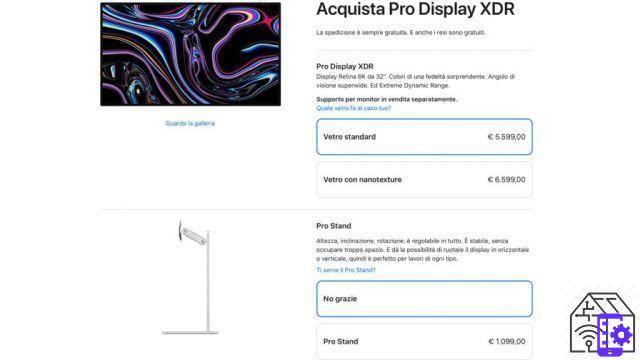
- Apple Air Tag, the small smart buttons that allow you to locate your personal items such as house keys, have been officially available for a few days and they are selling like hot cakes. This is because they are very useful, small in size, perfectly integrated with the ecosystem of the bitten apple and not particularly expensive. But there is a small detail that many users are unable to accept: in order to really use the AirTags it is necessary to have external accessories which act as lanyards and key rings, costing on average as much as the device itself. For this many people are resorting to DIY practicing a hole on Apple AirTags.
It spells "Apple", but it reads "marketing"

A few days after their debut, it can already be said that Apple's AirTags are a real success. The shopping boom is not surprising given that the device has a fairly affordable cost, especially considering the price range in which Apple products are placed. Furthermore these "smart buttons" are a revolution in the Apple ecosystem, as they allow you to track and locate - within the “Where is” app - the objects that we use daily and that we tend to lose. So your house or car keys, your wallet, backpack or purse.
Despite the success, the AirTags have made people talk about them also for a somewhat particular choice by the Cupertino company. In fact, Apple has not inserted a hole or a hook to be able to independently hang the device to your personal items. It was certainly not an oversight: it is one Marketing Strategy. The same one that Apple has been using for years to push users to buy expensive accessories in order to use its products. The original accessories, in fact, are available starting from 13,95 euros, up to 499 euros for the one signed by Hermès. Obviously to be added to the 35 euros of the AirTag.
The solution adopted by some users: to drill a hole on Apple's AirTags

Many users have wanted to rebel against this marketing strategy making a hole with a drill in the Apple AirTags. The practice spread after iFixit, the site that deals with disassembling and fixing tech devices, analyzed the device of the bitten apple. After disassembling it and making sure they could drill a hole in the side without damaging any internal components, the iFixit team took a drill bit and drilled a small hole. A practice that we advise against, as the chances of damaging the device are really high, as well as risking getting hurt.
It must be said that it is one real extreme rebellion to avoid giving it to the Cupertino company, but there are many other less dangerous alternatives. On e-commerce sites, such as Amazon, there are many accessories that are not original but less expensive, which allow you to use the AirTags as key rings or laces. Another possibility is to independently design accessories to be 3D printed, as shown by the designer Breccia.
Certainly the high cost of some original accessories it will not hold back the sales of AirTags and Apple will be able to continue rubbing their hands, with the awareness of having placed yet another product on the market that will "force" users to remain in the ecosystem of the bitten apple.
Discount
 Apple AirTag news
Apple AirTag news
- Keep an eye on and find your stuff in the Find My app, the same one you already use to locate your devices and ...
- AirTag is set up in an instant: a tap and connects to the iPhone or iPad
- To find an object, you can play the built-in speaker or ask Siri for help
A well established strategy
This is certainly not the first time that Apple has decided to sell its product without a fundamental component for its operation, in order to force users to buy expensive original accessories.

An example is the Pro Display XDR, an extremely expensive monitor with 6K resolution, which you can find for sale on the Apple website at well 5599 € (for the version with nanotexture you have to pay 6599 euros). But, you know, a monitor cannot be used without a pedestal, which the behemoth sells separately for more than 1000 euro. Of course, you can decide to use the monitor with your own support, or a wall bracket, by purchasing the VESA adapter for “only” 219 euros.
The same goes for the most powerful Mac Pro, which starts at 6599 euros for the basic version, to which you have to add 500 euros if you want the frame equipped with wheels instead of feet. In short, Apple knows how to make its expensive accessories want, certainly beautiful and design, sometimes indispensable and sometimes not. And, perhaps, this is the secret that makes it so economically efficient, with a revenue of $ 64,7 billion in the fourth quarter of 2020.




















![[Review] Samsung Powerbot VR7000: the robot vacuum cleaner from Star Wars](/images/posts/6bc44de38605b5c0fa12661febb1f8af-0.jpg)





